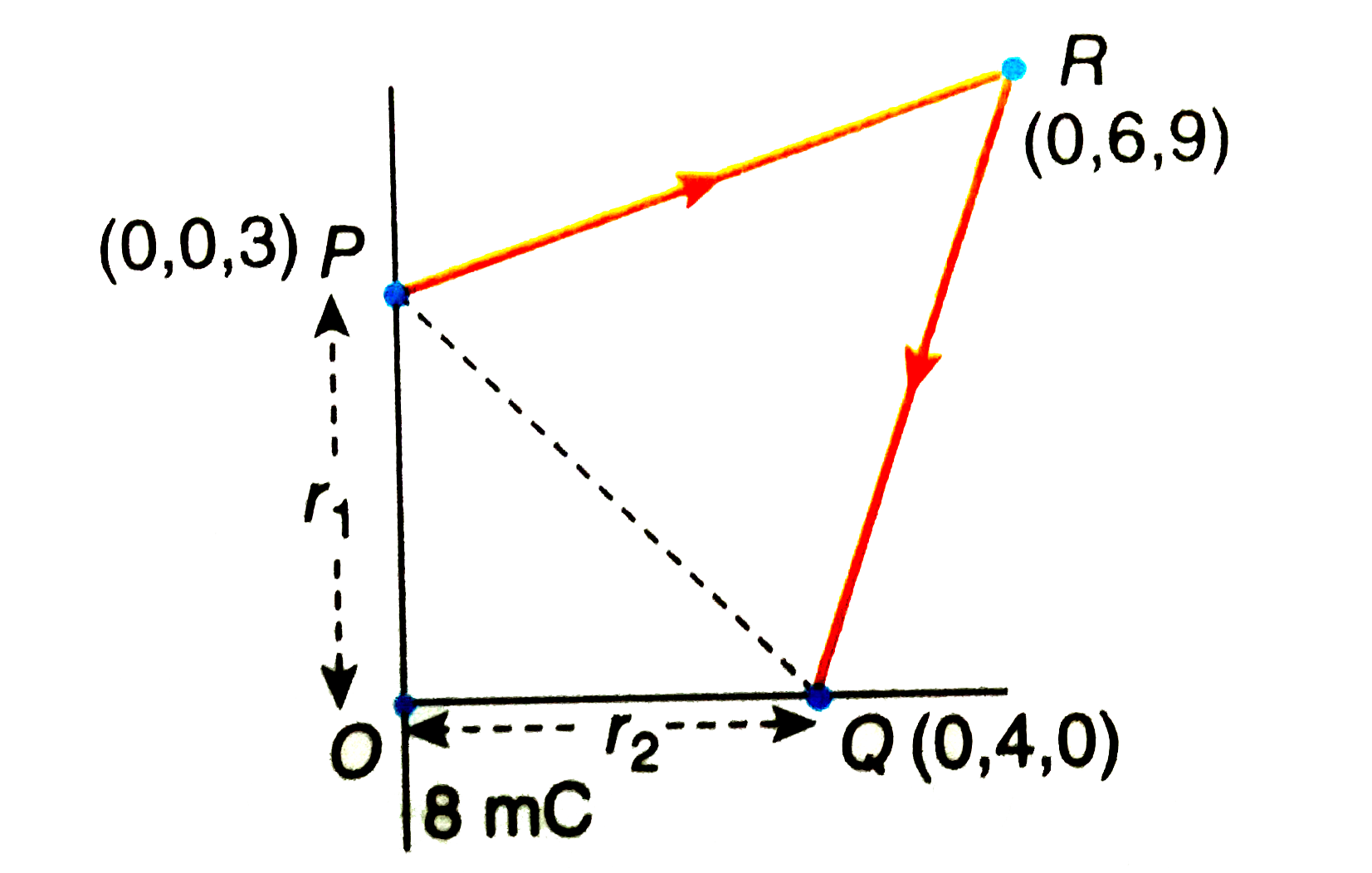Complete Solutions to NCERT textbook questions with answer hint of chapter ELECTRIC POTENTIAL of Class 12 book with complete answers and questions
| Class 12 | PHYSICS |
| Chapter | ELECTRIC POTENTIAL |
| CHHAYA PRAKASHINI | NCERT textbook questions with answer hint |
| Number Of Questions | 14 |
| Academic Year | 2023-24 |
A charge of 8 mC is located at origin. Calculate the work done in taking a small charge of `-2xx10^(-9)C` from a point P(0,0,3cm) to a point Q (0,4cm,0), via a point R (0,6cm, 9cm).
 View Solution
View SolutionIn a hydrogen atom, the electron and proton are bound at a distance of about 0.53 Å.
(a) Estimate the potential energy of the system in eV, taking the zero of the potential energy at infinite separation of the electron from proton.03:28View SolutionIn a hydrogen atom, the electron and proton are bound at a distance of about 0.53 Å.
(a) Estimate the potential energy of the system in eV, taking the zero of the potential energy at infinite separation of the electron from proton.
(b) What is the minimum work to free the electron, given that its kinetic energy in the orbit is half the magnitude of potential energy obtained in (a)?09:14View SolutionIn a hydrogen atom, the electron and proton are bound at a distance of about 0.53 Å.
(a) Estimate the potential energy of the system in eV, taking the zero of the potential energy at infinite separation of the electron from proton.
(b) What is the minimum work to free the electron, given that its kinetic energy in the orbit is half the magnitude of potential energy obtained in (a)?
(c ) What are the answer to (a) and (b) above if the zero of the potential energy is taken at 1.06 Å separation?09:14View SolutionTwo charges -q and +q are located at points (0,0,-a) and (0,0,a) respectively.
(a) What is the electrostatic potential at the points (0,0,z) and (x,y,0) ?06:19View SolutionTwo charges -q and +q are located at points (0,0,-a) and (0,0,a) respectively.
(b) Obtain the dependence of potential on the distance r of a point from the origin when `r gt gt a`.07:28View SolutionTwo charges -q and +q are located at points (0,0,-a) and (0,0,a) respectively.
(c ) How much work is done in moving a small test charge from the point (5, 0, 0) to (-7, 0, 0) along the x-axis?05:29View SolutionFig shows a charge array known as electric quadrupole. For a point on the axis of the quadrupole, obtain the dependence of potential on r for `r/a gt gt 1`, and contrast your results with that due to an electric dipole and an electric monopole (i.e., single charge).
 View Solution
View SolutionIf Coulomb's law involved `1/(r^3)` dependence (instead of `1/(r^2)`), would Gauss'law be still true?
02:32View SolutionDescribe schematically the equipotential surfaces corresponding to
(a) a constant electric field in the z-direction.03:26View SolutionDescribe schematically the equipotential surfaces corresponding to
(b) A field that uniformly increases in magnitude but remains in a constant (say, z) direction.04:26View SolutionDescribe schematically the equipotential surfaces corresponding to
(c ) A single positive charge at the origin.03:02View SolutionDescribe schematically the equipotential surfaces corresponding to
(d) A uniform grid consisting of long equally spaced parallel charged wires in a plane.03:20View SolutionThe top of the atmosphere is at about 440 kV with respect to the surface of the earth, corresponding to an electric field that decreases with altitude. Near the surface of the earth the field is about `100 V cdot m^(-1)`. Why then we do not get an electric shock as we step out of our house into the open? (Assume the house to be a still cage so there is no field inside.)
04:06View Solution
NCERT textbook questions with answer hint questions and complete solutions for chapter ELECTRIC POTENTIAL of CHHAYA PHYSICS (BENGALI ENGLISH) of Class 12
All Exercises from CHHAYA PRAKASHINI Class 12 PHYSICS ELECTRIC POTENTIAL
- CBSE Scanner
- Entrance Corner (Assertion-reason type)
- Entrance Corner (Comprehension type)
- Entrance Corner (Integer answer type)
- Entrance Corner (Multiple correct answers type)
- Examination Archive with solutions (AIPMT)
- Examination Archive with solutions (JEE Main)
- Examination Archive with solutions (NEET)
- Examination Archive with solutions (WBCHSE)
- Examination Archive with solutions (WBJEE)
- Exercise (Multiple Choice Questions - mark 1)
- Exercise (Very Short Answer Type Questions - mark 1)
- Exercise - Hots Numerical Problems (Marks 3/4/5)
- Exercise - Problem set - II (Marks 3 or 4)
- Exercise - Problem set -I (Marks 2)
- Exercise - Short Answer Type Questions - I (mark 2)
- Exercise - Short Answer Type Questions - II (mark 3 or 4)
- Higher order thinking skill (HOTS) questions
- NCERT examplar questions with answer hint (MCQ -1 single option correct)
- NCERT examplar questions with answer hint (MCQ -2 Multiple options correct)
- NCERT textbook questions with answer hint
- Numerical Examples
- Section related questions
